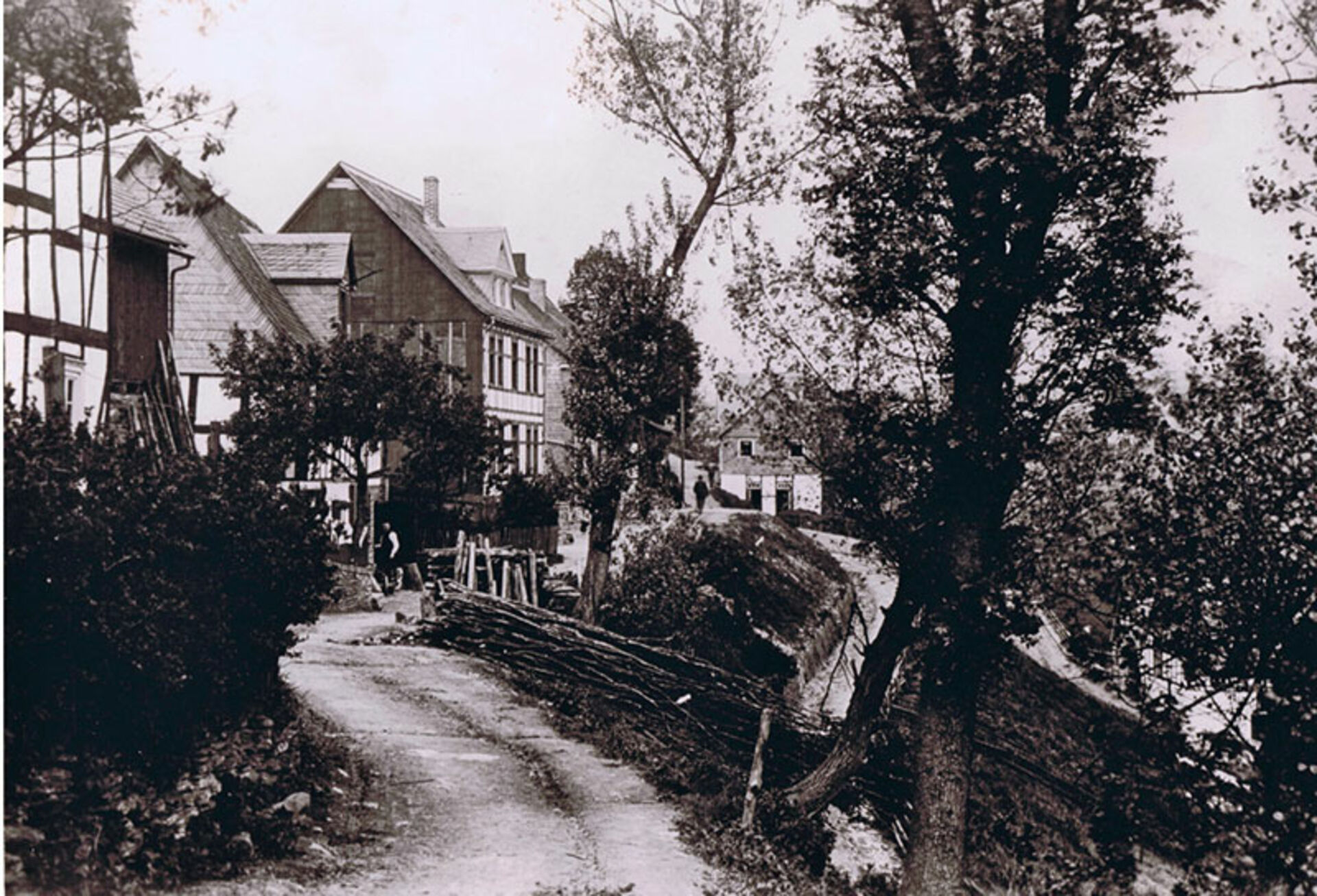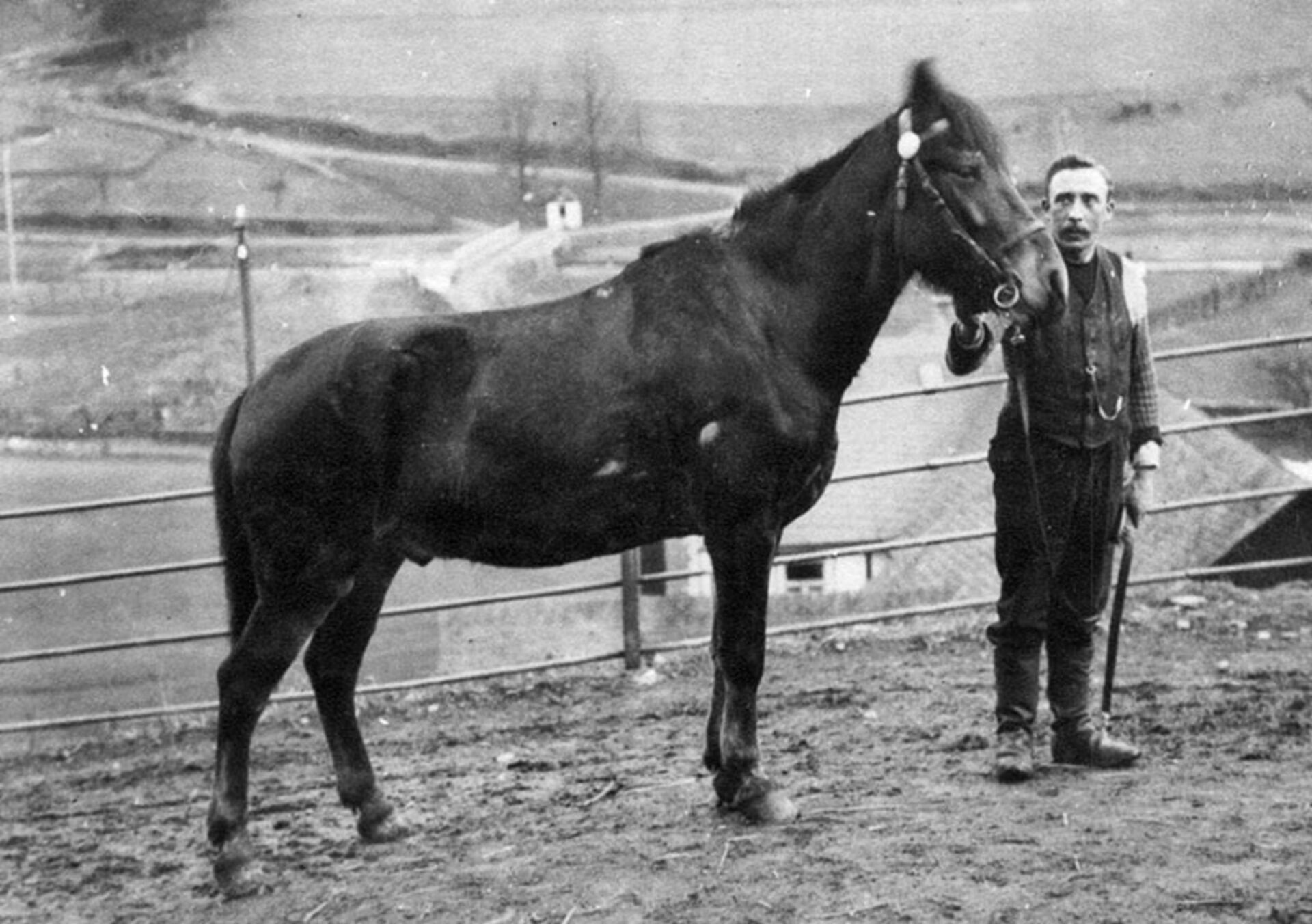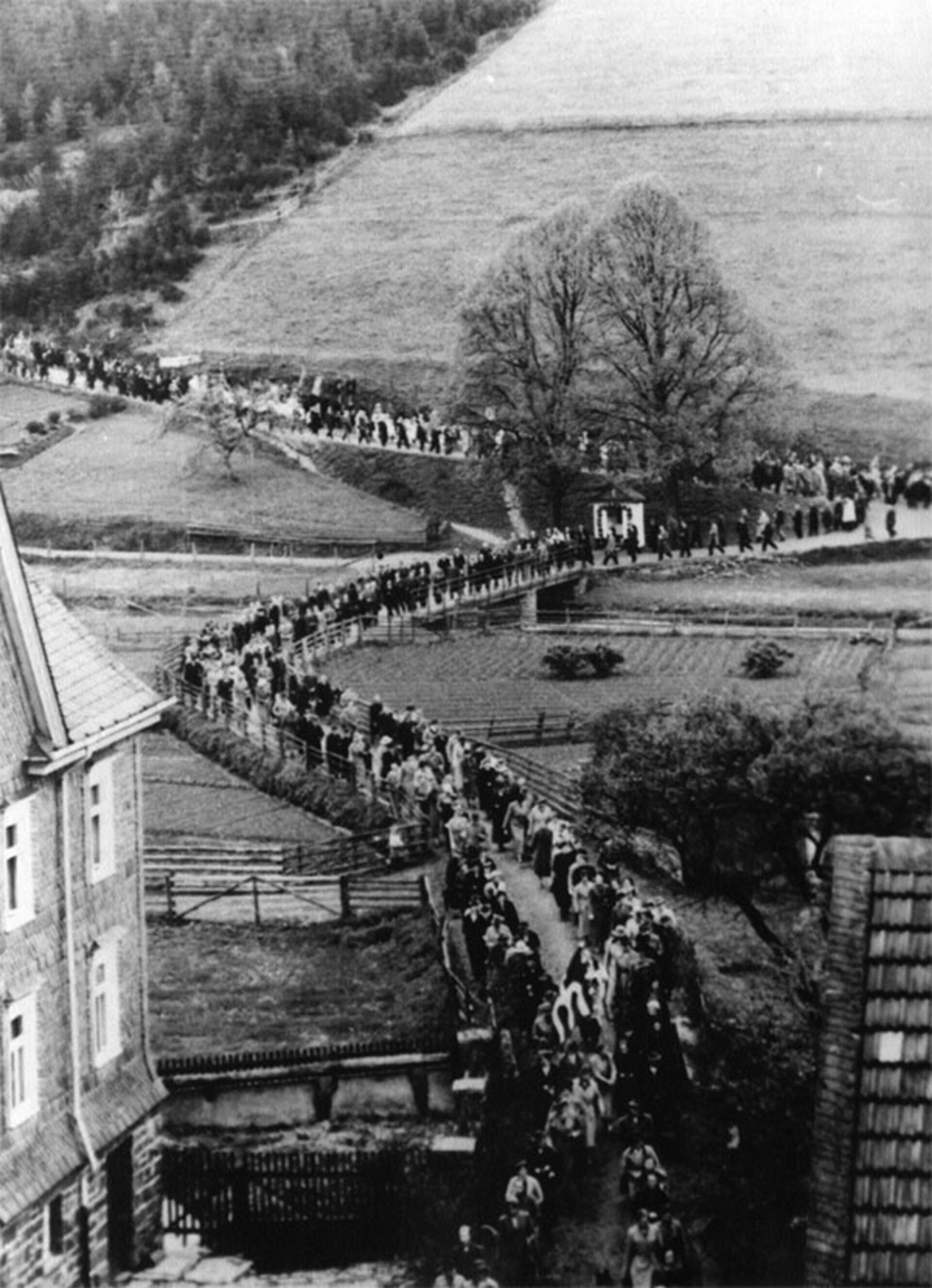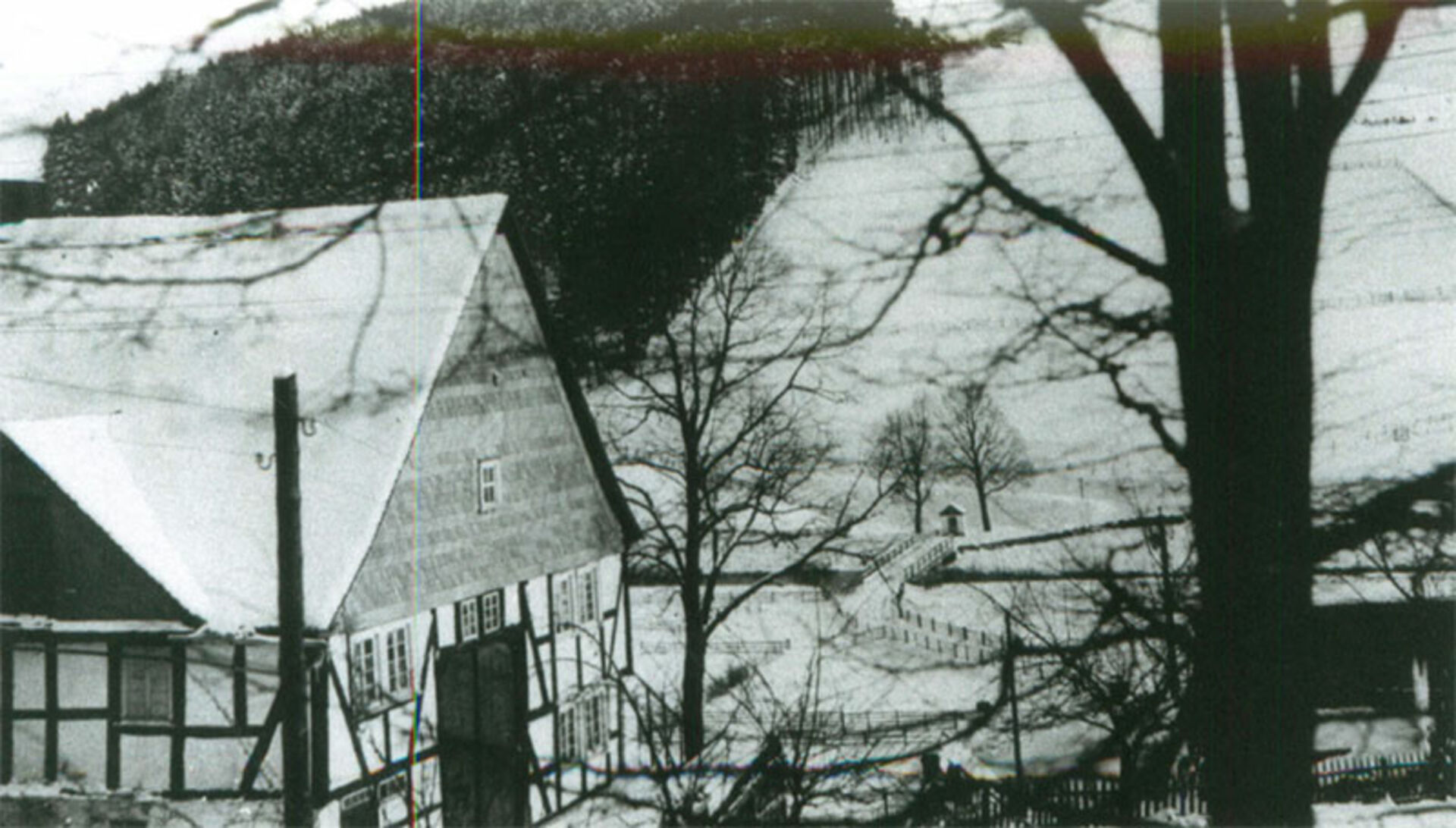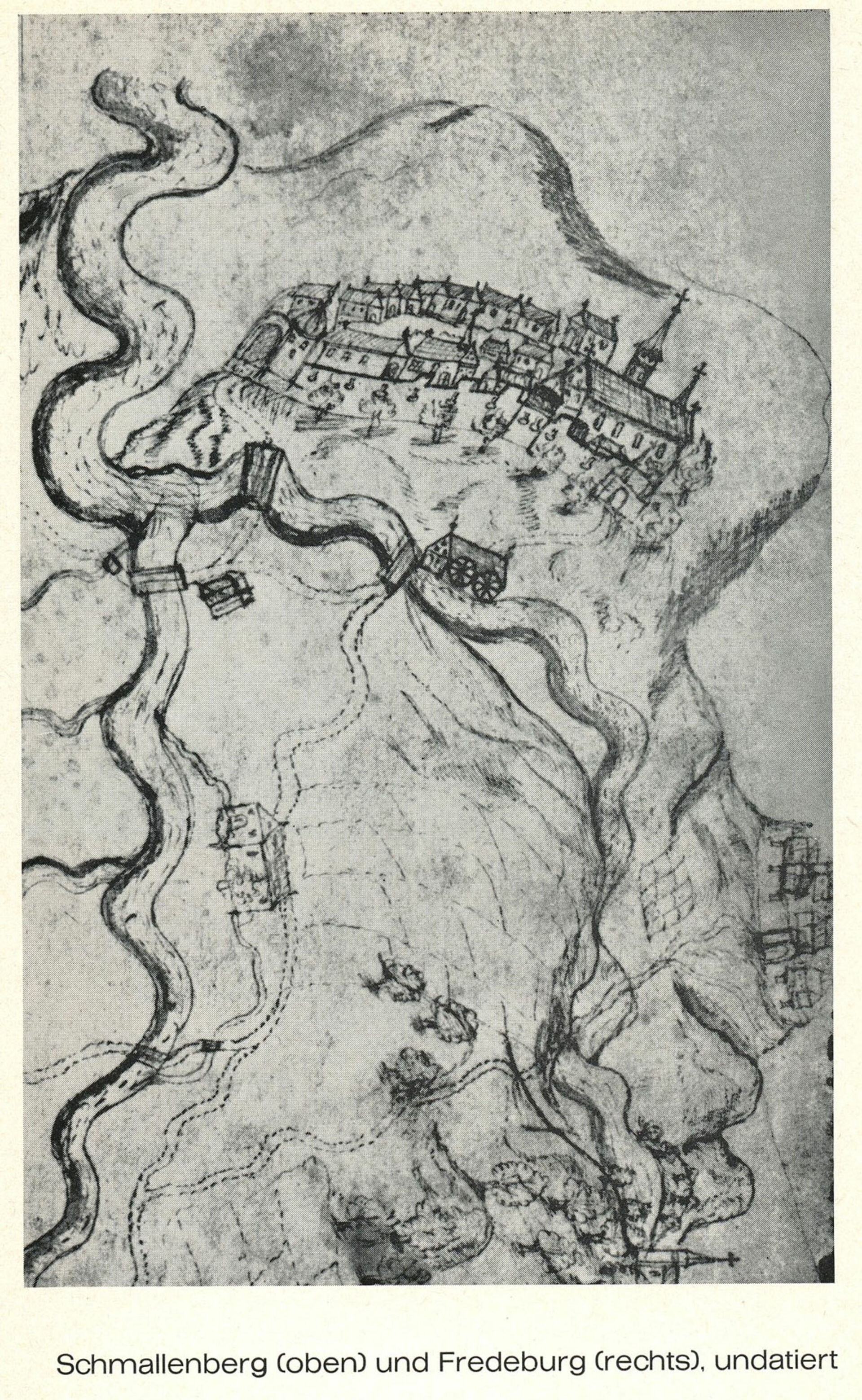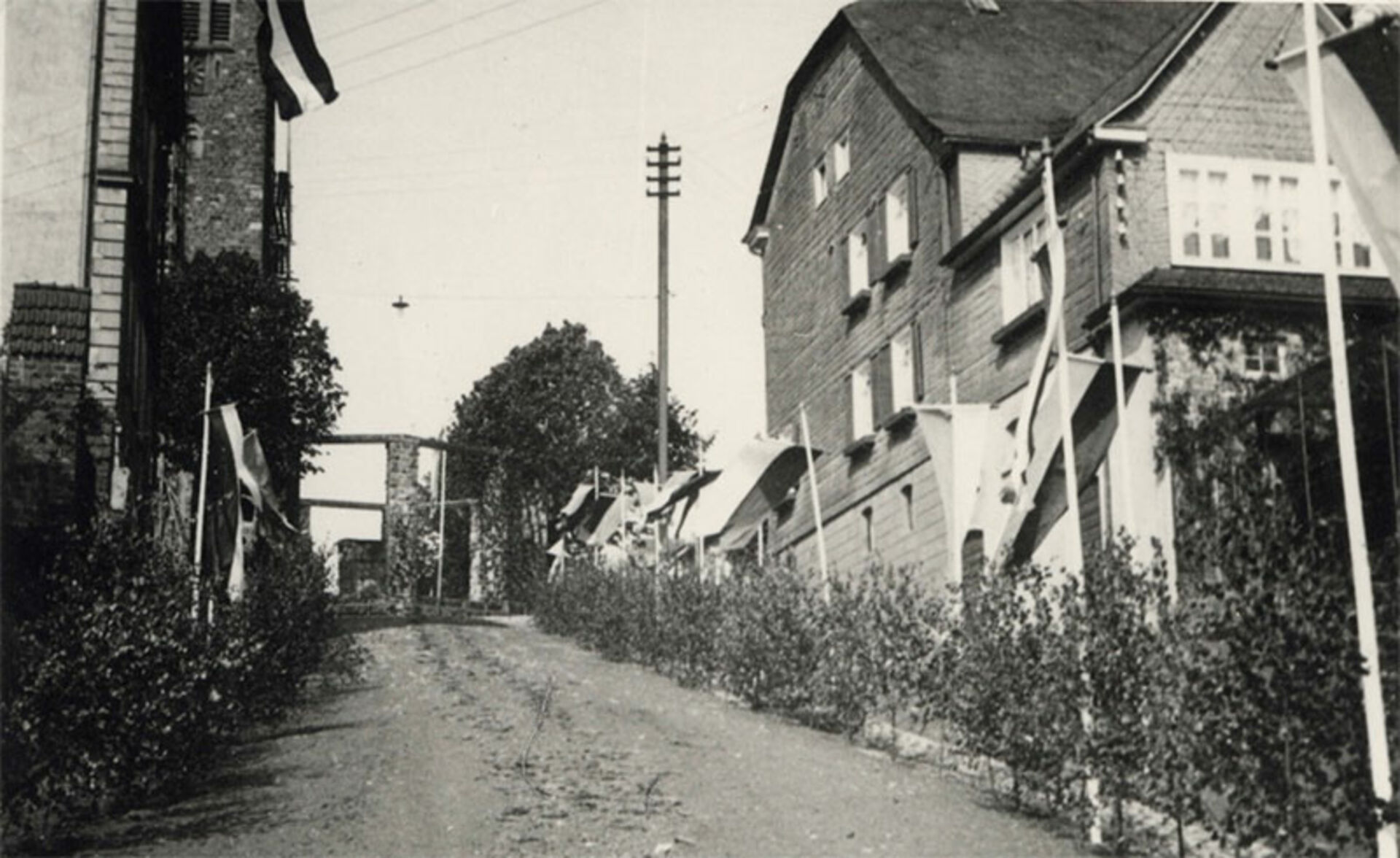At the water gate
Trade and crafts in the Middle Ages & modern times
Information point:
- Historical path "Wasserpforte"; Eastern city gate "Wassertor"
Crafts
Schmallenberg was a town of craftsmen and merchants in the Middle Ages; at the same time, however, all residents also farmed and kept livestock. Bakers, tailors, shoemakers and wool weavers were active here, and there is evidence of blacksmiths in the town as early as 1273 and 1292. Mills were operated outside the town (since 1416 the fulling mill "Auf der Lake", in the east of the Lenne the monastery mill from the 11th century, the town mill further upstream and other mills).
In 1560, the town council and mayor issued a "purchase and wall house ordinance", according to which the town demanded a tax from the proceeds of sold textiles. Shortly before this, the merchants had built their "Kauff- und Wandthaus" on the market square. In 1625, the clothiers and tailors adopted their own guild statutes.
Also in the 16th century, water-powered iron hammers were built on the Lenne iron hammers powered by water, which produced sickles, scythes, weapons, straw knives, hoes and shovels. This production reached its peak at the beginning of the 19th century. Around 1800 there were Schmallenberg 16 ironworks and hammers, making it the second largest in the Olpe in second place in the duchy Westfalen. In 1847, only 11 iron and metal works were still in operation. The reasons for this decline were the growing competition from the Märkisch Sauerlandthe high cost of raw materials and the emergence of new processing techniques.
Trade
The town developed into a center of local market trade, as holding a market was a municipal prerogative. The inhabitants of the surrounding villages were not allowed to trade or carry on a trade. Originally there were seven fairs a year, later (1575) three in Schmallenberg. The craftsmen and merchants played an important role as suppliers for the long-distance trade of the medium-sized and large towns: Schmallenberg belonged to the Hanseatic League.
For the 14th century there is evidence of not inconsiderable long-distance trade, although this declined in the 15th century. The first source evidence of an equally significant itinerant trade dates back to the 16th century. The goods traders took with them on their travels were locally produced wood, iron and textile goods. While the neighboring towns developed Medebach and Hallenberg developed into farming towns, there were Schmallenberg and Winterberg there was a continuity of trade. One reason for this was the comparatively poor agricultural conditions in this area. While the itinerant trade had reached a considerable level in the middle of the 18th century, it disappeared almost completely by the beginning of the 20th century.


